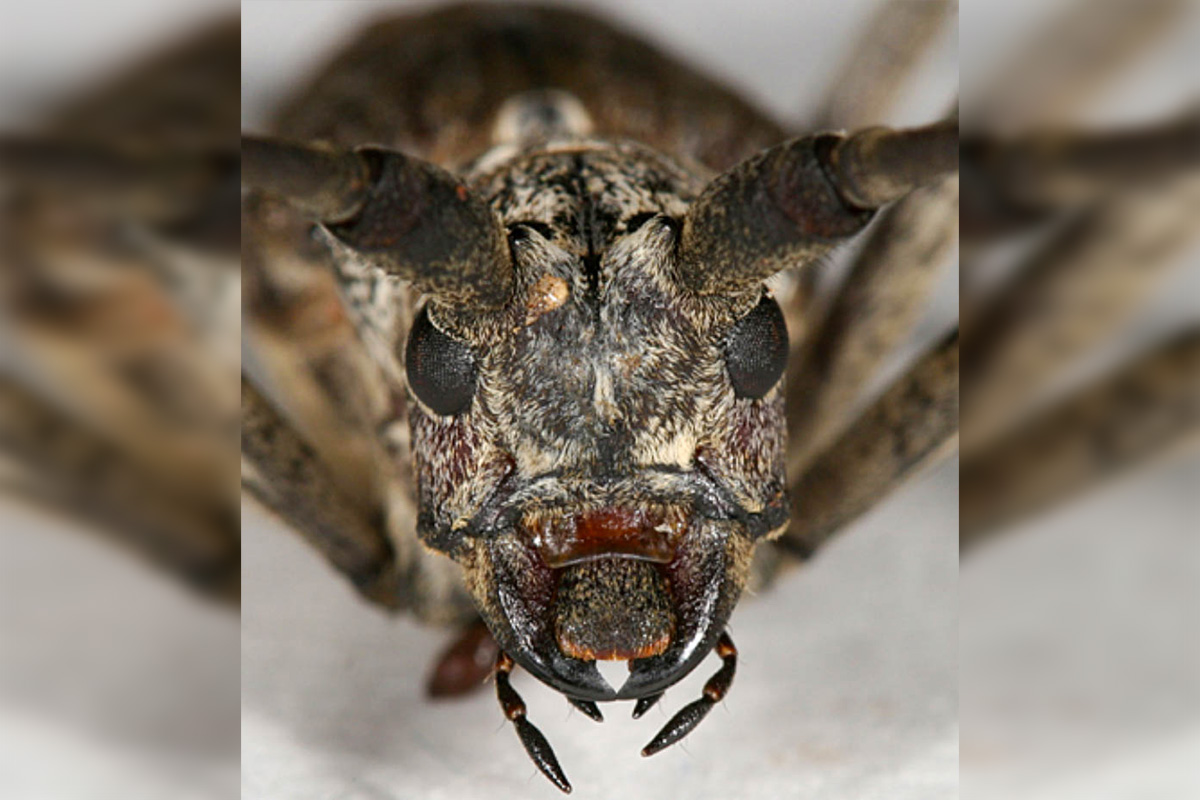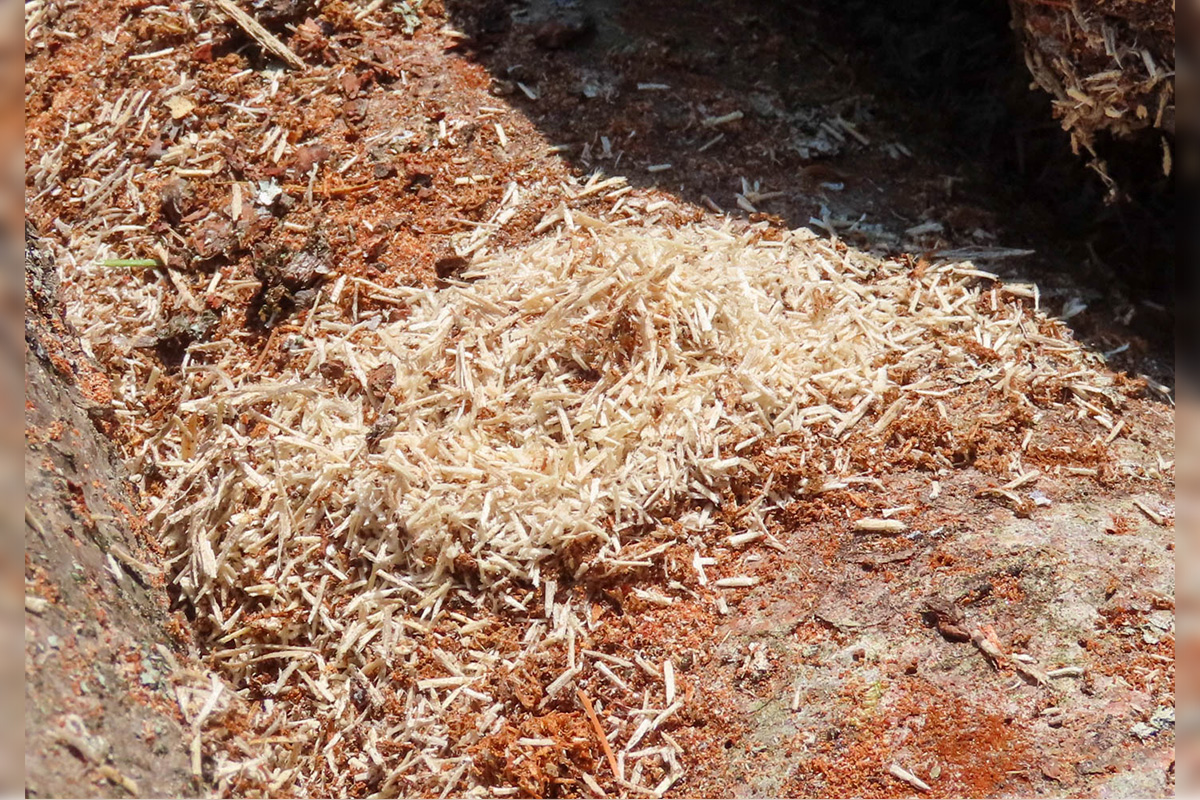Hey, hey it’s the beetles—people say they larvae around
MANITOULIN—Forests have played a key role in the lives of everyone living on Manitoulin Island from the time humans first arrived by canoe thousands of years ago in search of food and fuel, to those living here today.
It is likely that some of the first peoples who arrived on the shores of Manitoulin were spooked by strange, haunting sounds that appeared to come from trees. These chirping-like sounds can still be heard when near dead or dying trees and cut logs. As Halloween approaches, some might let their imagination get carried away, and think they are hearing ghosts.
Sadly, there are families who have hastily sold the summer camp because their frightened children were convinced ghosts making these sounds were lurking in nearby forests. Of course, there is no such thing as ghosts and fortunately entomologists can provide an explanation that will calm the most delicate of frayed nerves.
This past August, I experienced these sounds while visiting a friend’s cabin near Manitoulin. There was a pile of freshly cut firewood beside the cabin, from a pine tree that had recently succumbed to old age.

The wood pile was emitting a chorus of audible sounds that could be heard up to 10 m away. I pulled away some of the loose bark on the logs and there feeding on the decomposing wood were the so-called ‘ghosts’ – the larvae of long-horned beetles.
The larvae were those of the white-spotted sawyer beetle Monochamus scutellatus of the large beetle family Cerambycidae. Although gross appearing with over-sized mandibles designed for biting off pieces of wood, the larvae are natural members of Manitoulin forests and play a vital role in forest ecosystems.
Adult sawyer beetles are large bodied, 2 to 2.5 cm in length. Antennae of males are twice the body length. They are native to North America. Both sexes have a white spot on the base of the wings and some have additional white spots.

Female beetles chew small holes in dead or dying pine trees or logs into which they lay eggs. Once the eggs hatch, the larvae burrow into the phloem and cambium under the bark where they dig tunnels or galleries in which they feed.
Larvae are legless, creamy-white and have a reddish-brown head with large, hard mandibles. They spend two years in trees or logs and when full grown are 3.5-5.0 cm in length.
Larvae of sawyer beetles are saproxylic insects which means they are dependent on either dead or dying wood as their sole source of food. They generally attack overmature or dead trees after a forest fire, a windthrow event, a disease or defoliation. They can also be found in stacked logs just after felling or in the walls of cabins made from unstripped logs.
Larvae pupate in a widened portion of their gallery near the log surface during the second spring. Adults emerge in June and July and make a formidable sight when flying through forests with their wings and antennae extended. Even seasoned entomologists jump when the adults slam into their body and cling onto their clothing with sharp claws on their six feet.
When penetrating the wood, the larvae chew characteristic oval-shaped holes to the surface through which they extrude excelsior-like sawdust from the surface. Small piles of sawdust on the log surface or on the ground below is a clear indication the log or tree is inhabited.

Tunnels made by the larvae can be harmful to the logging industry, by reducing the value of lumber; however, sawyer beetles are part of the natural death and nutrient cycling of trees. Their tunnels aide in the penetration of fungi that hasten the breakdown of dead trees and return their nutrients to the soil.
Noise made by the larvae, sounds like a finger-nail being scratched over a comb. The larvae are positioned in late summer and fall with their heads directed outwards and the sound is produced by their mandibles scratching against the sides of their tunnels.
Producing sound must put the larvae in a precarious position since sound would attract the attention of beetle-eating woodpeckers. It follows that the production of sound has an adaptive value.
We know that larvae are cannibalistic because large larvae eat smaller larvae when placed together in a petri dish filled with sawdust. It is suspected that when high quality food like the layer of cambium cells just under the bark is of limited supply, the risk of starving or being eaten by another beetle larva is higher than the risk of being discovered and eaten by a woodpecker.
In other words, sound production by sawyer beetles is a territorial defence mechanism providing a way for larvae to avoid making their tunnels too close to one another and risk larger ones eating smaller ones.
Sound produced by sawyer larvae therefore does not seem to be associated with feeding making the event rare among beetles. But if sound is meant to warn others, how do they perceive the sound? Beetle larvae do not have ears, but sawyer beetles have drum-like discs inside the abdomen that likely detect vibrations.
Learning about natural history in forests helps us appreciate that trees provide the oxygen we need to breath, control our weather, enhance our commerce as some are turned to lumber, support our tourist industry, and in some cases heat our homes.
However, it is unfortunate that forests evoke fear in some people. Darkness, loss of direction and the prospect of meeting dangerous animals provoke fears we all inherit from deep biological programming.
Our ingrained survival instincts as well as fairytales set in dense woodlands inspire real and imaginary danger. Come Halloween, thrill seekers in search of excitement, suspense and screams, visit amusement parks with forests designed to appear haunted.
For many people, a fear of forests or woods is based on the unknown. Modern society provides few opportunities for people who live in urban areas to experience nature so they are not used to being in wooded areas. Unusual sounds, smells and texture of the ground in forests make some feel wary.
Fear among children can be triggered by a number of factors including getting lost. Many of the fairytales of our youth served as a symbol of the unknown and mysterious. From Little Red Riding Hood to Hansel and Gretel, many of the iconic fairytales take place in forests which are portrayed as places of danger.
Children with a good imagination learn that dangers in forests are embodied in the form of wolves or other fearsome creatures waiting to pounce on unsuspecting hikers. This danger in fairytales was meant to represent challenges we face in life, and the courage and resilience needed to overcome them, but their intent is missed by some children.
Fears developed by fairytales can be an obstacle later in life that prevents some people from appreciating the beauty and diversity of harmless life in forests and the ecological contributions of forest habitats. Avoiding forests due to fear can lead to a lack of appreciation for the natural world and reduce our willingness to protect and conserve it.
Many studies have shown that spending time in forests has significant mental health benefits including reduced stress, anxiety and depression. Forest trees release aerosols that we breath into our lungs and improve our circulatory system and functioning of our brains. Children afraid to venture into these environments miss out on these benefits.
As Diana Beresford-Kroeger tells us in her latest book ‘Our Green Heart’, we take forest trees for granted at our peril. She reminds us that trees play a central role in the healthy functioning of our planet and everything that lives on it, including Manitoulin Island.
She tells us that rather than only seeing the value of land once it is cleared of forests, we need to begin replanting and nurturing trees as they have the power to control violent oscillations in the weather and prevent places like Manitoulin Island from overheating.
Overheating, as we experienced this past summer, dries out trees and prevents them from absorbing carbon. The world will be negatively impacted if there are not enough forest trees to absorb carbon as increasing carbon in the atmosphere leads to global climatic change.
Joining clubs such as the Manitoulin Nature Club or Friends of Misery Bay, and taking part in their field trips, is a good way to gain an appreciation and understanding of trees and forests.
by Joe D. Shorthouse,
Joe Shorthouse is a retired entomologist with Laurentian University, a Sudbury resident and summer resident of Manitoulin Island





